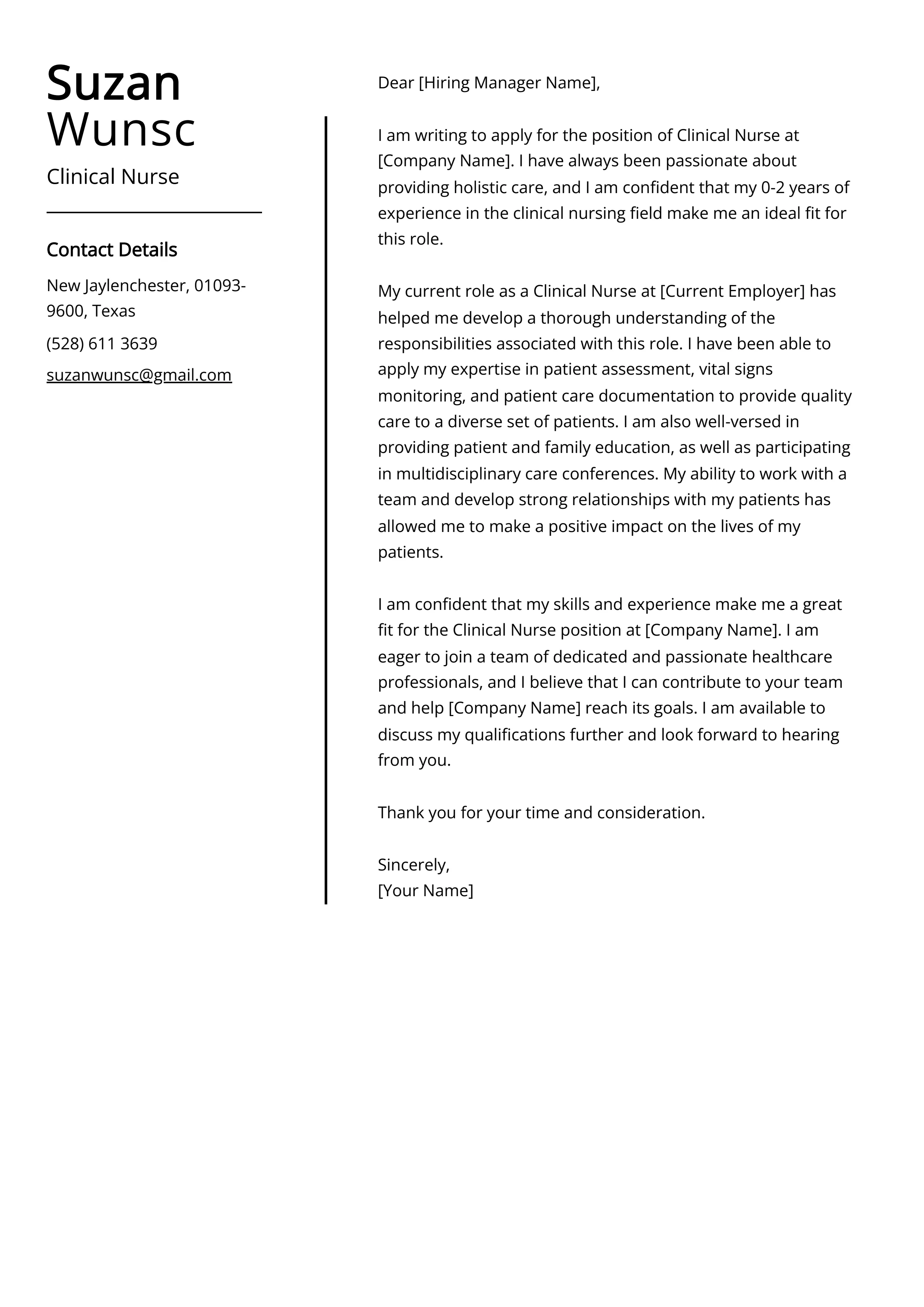RN Cover Letter Essentials
A well-crafted RN cover letter is your first impression on a potential employer, acting as a crucial gateway to securing a nursing position. It’s an opportunity to showcase your qualifications, experience, and passion for patient care. Unlike a resume, a cover letter allows you to tell a story, connecting your skills and experiences to the specific requirements of the job. This guide offers top tips and essential elements to help you craft a compelling RN cover letter that stands out and increases your chances of landing an interview. Mastering the art of the cover letter is an investment in your nursing career, ensuring your applications are not just seen, but remembered.
Contact Information
Accuracy and professionalism in your contact information are paramount. This section ensures the recruiter can easily reach you. Proper formatting demonstrates attention to detail and creates a positive first impression. This section should be placed at the top of your cover letter. Always double-check that the details are correct before submitting your application.
Your Information
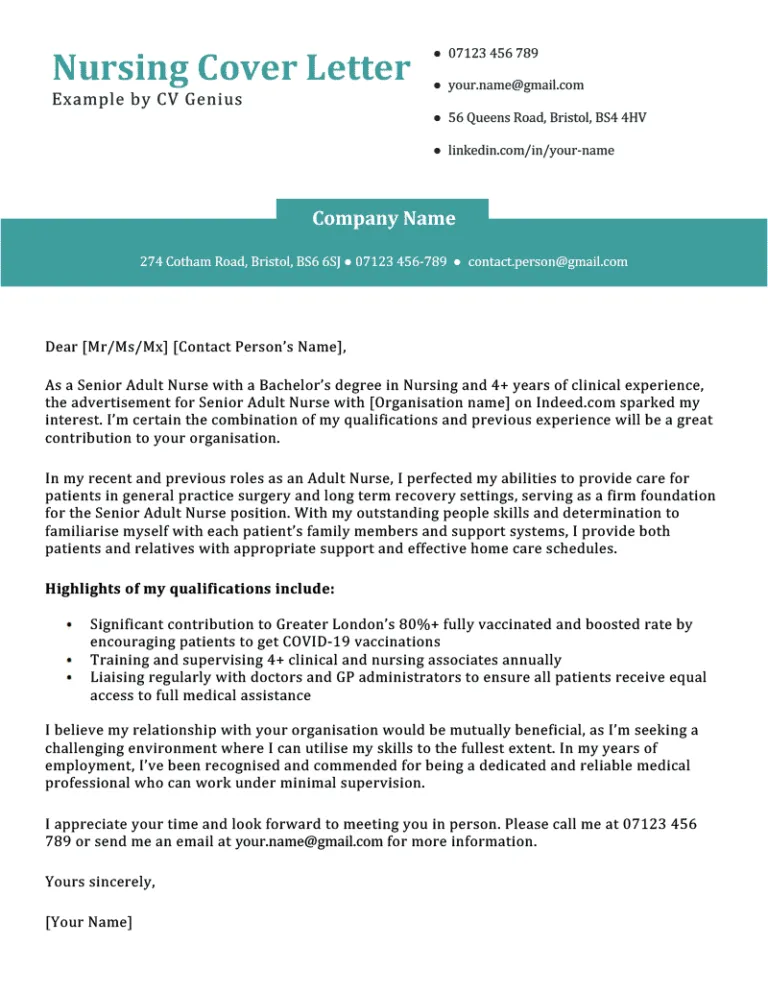
At the top left of your cover letter, clearly list your full name, address, phone number, and professional email address. Use a professional-sounding email; avoid nicknames or informal addresses. The goal is to provide easily accessible contact details that the employer can quickly use to reach you.
Recipient Information
Direct your letter to the hiring manager if possible. Research the company or use LinkedIn to find the appropriate person’s name and title. Include the hiring manager’s name, title, company name, and company address. This personalized touch demonstrates that you’ve done your homework and are genuinely interested in the position. Addressing the letter to a specific person significantly increases the likelihood of it being read and taken seriously.
Greeting and Salutation
A professional greeting sets the tone for your cover letter. Use a formal salutation such as “Dear Mr./Ms./Dr. [Last Name]”. If you cannot find a specific name, a general greeting like “Dear Hiring Manager” is acceptable, but always try to personalize the letter whenever possible. Avoid overly casual greetings; your cover letter should convey professionalism and respect. The salutation is a crucial element in making a good first impression.
Body of the Cover Letter
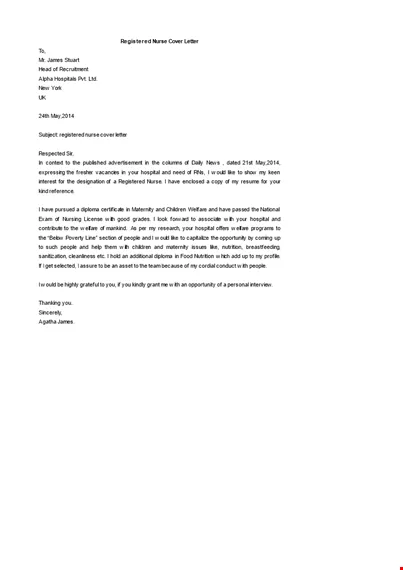
The body of your cover letter is where you showcase your suitability for the RN position. It should be concise, engaging, and tailored to the specific job requirements. This section provides the substance of your application, allowing you to highlight your relevant skills, experiences, and accomplishments. Proper organization and content are critical to making a lasting impression and securing an interview. The following sections provide guidance for developing a strong body for your cover letter.
Opening Paragraph
Your opening paragraph should immediately grab the reader’s attention and state your intention to apply for the position. Mention the specific job title and where you found the listing. Briefly state why you are interested in the role and the company. Highlight one or two key skills or experiences that make you a strong candidate. The goal is to hook the reader from the start and make them want to learn more about you. A strong opening sets the tone for the rest of the letter and shows enthusiasm for the role.
Highlight Your Skills and Experience
This section is the core of your cover letter. Focus on the skills and experiences that align with the job description. Provide specific examples to illustrate your qualifications. Instead of simply listing skills, demonstrate how you have used them in previous roles. Use the STAR method (Situation, Task, Action, Result) to describe your accomplishments. Tailor your letter to each job application by emphasizing the most relevant skills and experiences. This tailored approach shows that you have researched the role and are a suitable fit.
Quantify Your Achievements
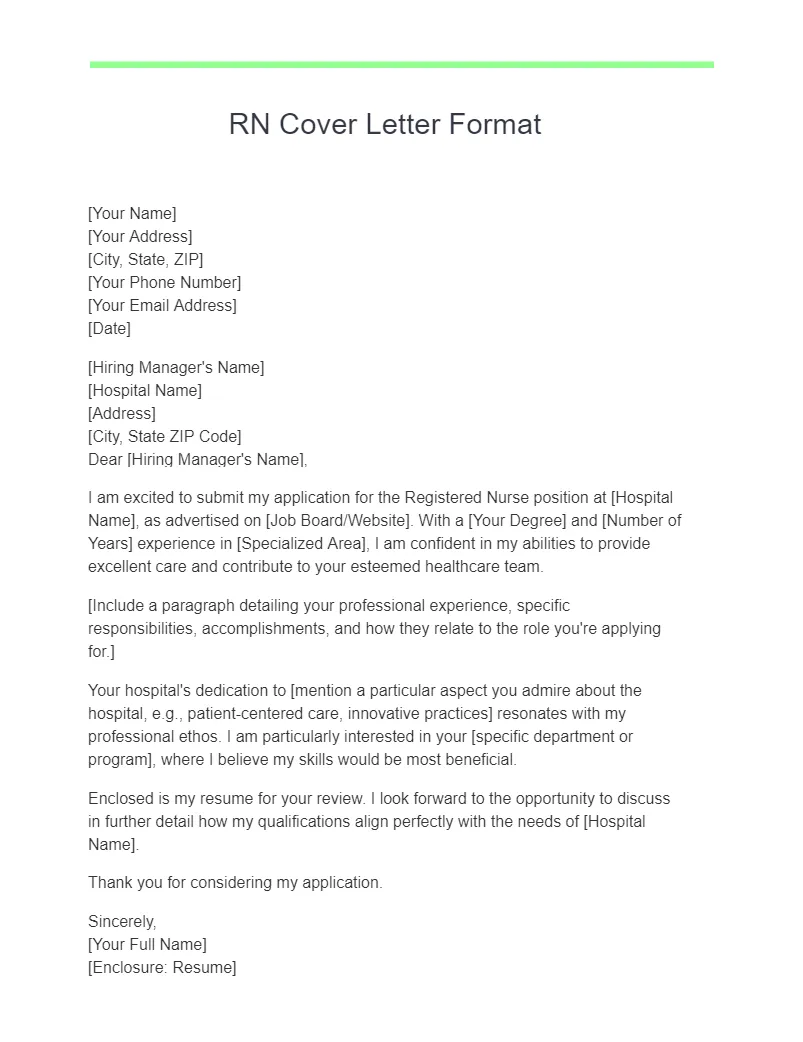
Whenever possible, quantify your achievements with numbers and data. This makes your accomplishments more impactful and provides tangible evidence of your skills. For example, instead of saying “Improved patient outcomes,” say “Improved patient outcomes by 15% through implementing new care protocols.” Use metrics to showcase the results of your work and provide concrete examples. Quantifiable achievements demonstrate the value you brought to previous roles and make your application more compelling.
Showcase Relevant Certifications
Mention your relevant certifications, such as ACLS, BLS, or any specialized training. Include the name of the certification and the issuing organization. Ensure that your certifications are current and valid. Highlight certifications that are specifically mentioned in the job description. Including relevant certifications demonstrates that you have met the necessary requirements for the position and are committed to professional development. Always present these credentials as another proof of your expertise.
Express Your Enthusiasm
Express your genuine interest in the role and the company. Explain why you are excited about this specific opportunity. Show that you have researched the company’s mission, values, and recent achievements. Connect your personal goals with the company’s objectives. Enthusiasm can set you apart from other candidates and make a lasting impression on the hiring manager. This is your chance to convey passion and a true desire to contribute to the healthcare team.
Closing Paragraph
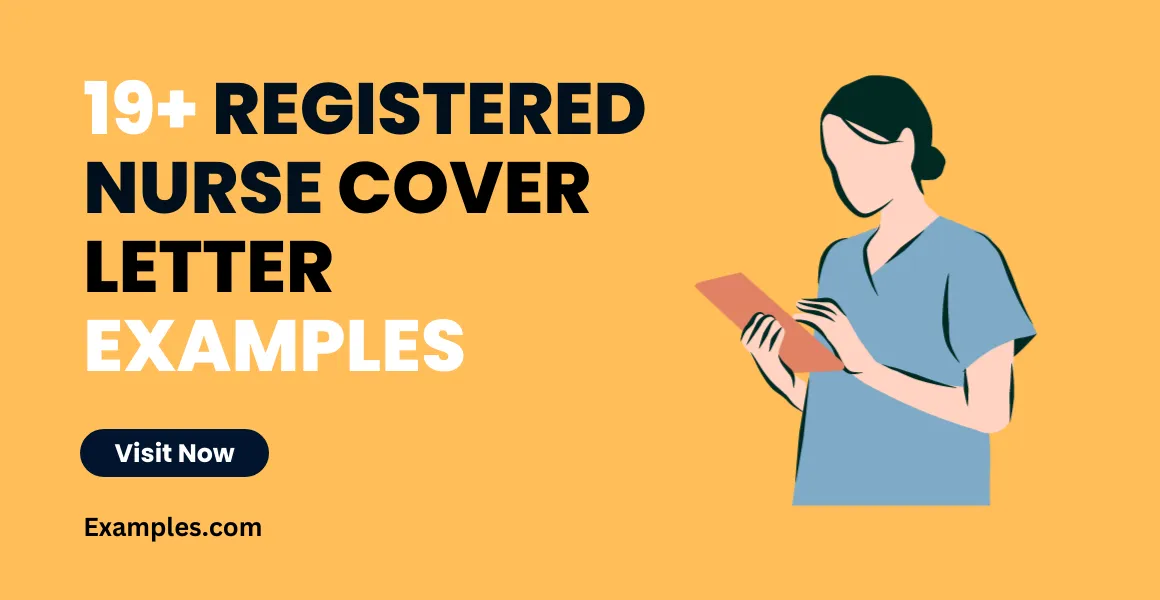
Your closing paragraph should summarize your key qualifications and reiterate your interest in the position. Thank the reader for their time and consideration. Express your eagerness to discuss your qualifications further in an interview. Reiterate your contact information if necessary. End with a professional closing to leave a positive final impression and make it easy for the hiring manager to follow up.
Call to Action
Include a clear call to action, such as requesting an interview. State your availability for an interview and any specific dates or times you are available. Make it easy for the employer to take the next step. A strong call to action shows your initiative and eagerness to move forward in the hiring process.
Thank You and Sign-off
Conclude your cover letter with a professional sign-off, such as “Sincerely” or “Respectfully.” Include your typed full name below the sign-off. If submitting a hard copy, leave space for your signature above your typed name. Always thank the hiring manager for considering your application; this demonstrates professionalism and courtesy. This final touch reinforces your professionalism and shows your appreciation for their time.
Formatting and Design
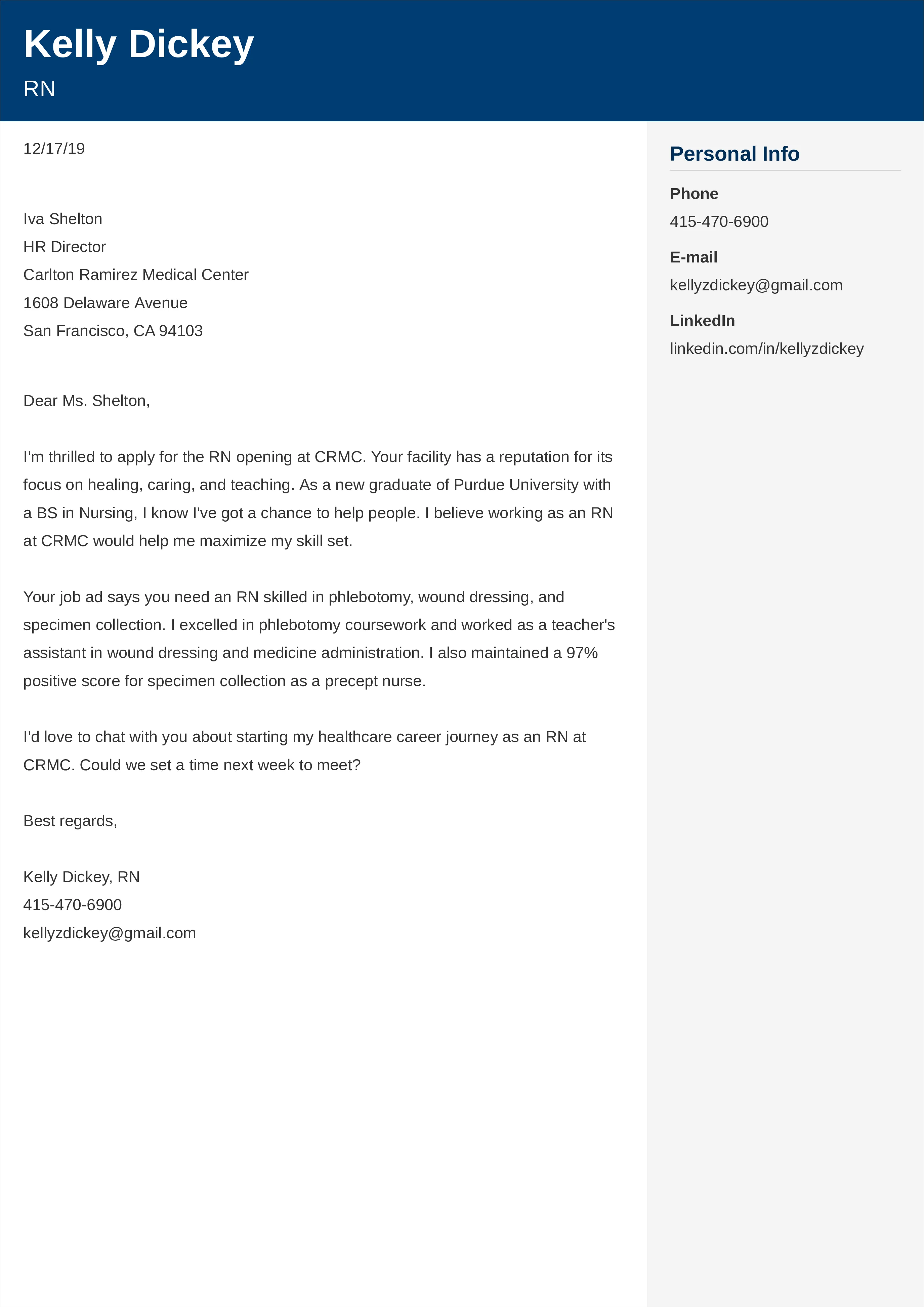
Formatting and design are crucial for making your cover letter visually appealing and easy to read. A well-formatted letter demonstrates attention to detail and professionalism. Use these tips to present your qualifications in the best possible light.
Font and Style
Choose a professional and readable font, such as Times New Roman, Arial, or Calibri. Use a font size of 10-12 points. Use consistent formatting throughout the document, including headings, paragraphs, and bullet points. Ensure that your cover letter is easy to read and visually appealing, using white space effectively to separate different sections of text. A clean and well-structured design enhances readability and reflects professionalism.
Letter Length
Keep your cover letter concise and to the point, ideally no more than one page long. Focus on the most relevant information and avoid unnecessary details. A shorter cover letter shows respect for the hiring manager’s time. Ensure your letter is well-organized and focused to convey your key qualifications effectively.
Proofreading and Editing
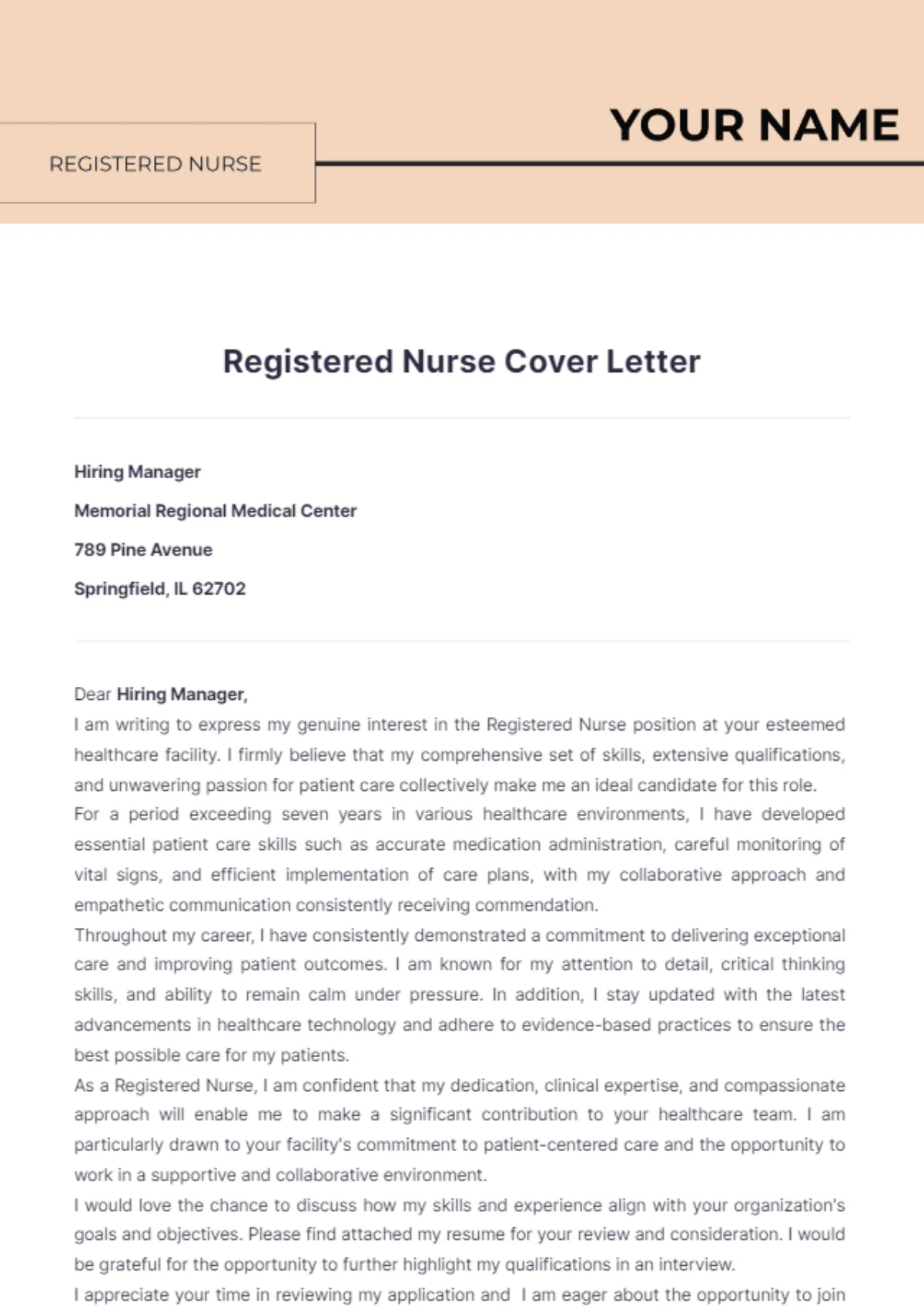
Proofreading and editing are critical steps to ensure your cover letter is free of errors. Errors can detract from your credibility and professionalism. Always proofread your cover letter carefully, and consider having a trusted friend or colleague review it as well. Even a single mistake can negatively impact your application. Careful proofreading demonstrates attention to detail and professionalism.
Common Mistakes to Avoid
Avoid common mistakes that can undermine your cover letter. Pay attention to details to increase your chances of success. These are the most frequent errors observed in RN cover letters and how to avoid them to make the best impression possible.
- Typos and grammatical errors
- Generic cover letters
- Focusing on yourself too much
- Ignoring the job description
- Using jargon or abbreviations
- Exceeding one page in length
- Neglecting to tailor the letter
- Lack of enthusiasm
